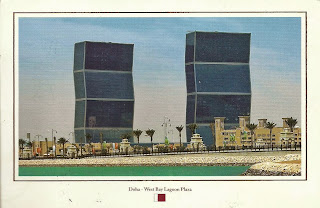THE NEBRASKA STATE CAPITOL
LINCOLN, NEBRASKA
The Nebraska State Capitol, with its 400-foot tower, is topped by the 32-foot bronze statue of "The Sower".
Sent by Charlene, from Lincoln, Nebraska.
The Nebraska State Capitol, located in Lincoln, Nebraska, houses the primary executive, judicial, and legislative offices of the U.S. State of Nebraska.
The structure is anchored by a three-story, 437-foot (133 m) square base. This square base houses offices most frequently visited by the public. The second floor (main floor) is home to the Nebraska Supreme Court, the Nebraska Court of Appeals, and the Nebraska Legislature.
From the center of the base, a tower rises 362 feet (110 m), crowned by a gold-tiled dome. The spire—The Sower and its pedestal—add an additional 32 feet (9.8 m) to the building’s height. Common measurements list the capitol at 400 feet (120 m), making it the second-tallest U.S statehouse, surpassed only by the 450-foot (140 m) Louisiana State Capitol.
As the tower was intended for expansion of the Nebraska State Library, the 17-foot (5.2 m) tower floors were originally designed to include loft-like stacks for book storage. By 1925, with government increasing in size, the State of Nebraska decided to redesign the tower to house offices. Tower floors continue to house various offices today.
In total, there are 15 full floor stories in the capitol (three mezzanines also exist within the tower). The 14th floor, Memorial Chamber, is the highest publicly accessible level. At this level, four observatory decks offer views of Lincoln from 245 feet (75 m) above the ground.
Chapter 27.56 of the Lincoln Municipal Code places height restrictions on structures within the designated Capitol Environs District. This code helps to maintain the capitol’s title as the tallest building in Lincoln. The capitol held the title of tallest building in Nebraska until 1969 with the completion of the 478-foot (146 m) Woodmen Tower in downtown Omaha. With the completion of Omaha’s 634-foot (193 m) First National Bank Tower in 2002, the capitol became the third-tallest building in Nebraska.
The building was designed by Bertram Grosvenor Goodhue, who drew upon Classical and Gothic architectural traditions. It was constructed between 1922 and 1932, of Indiana limestone. (Source)








































